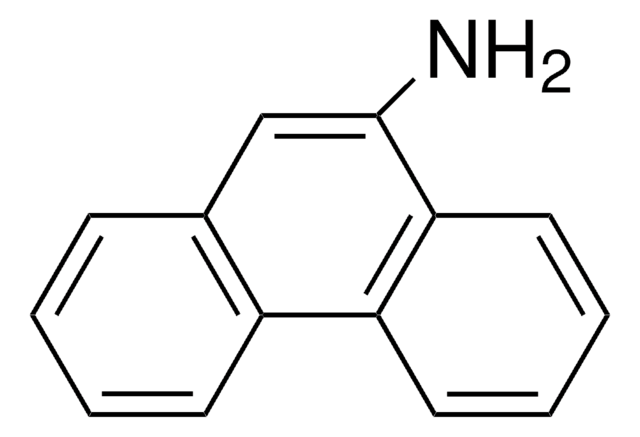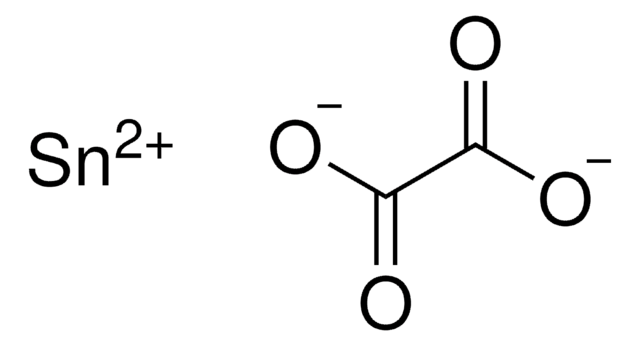244643
Tin(II) oxide
≤60 micron particle size, powder, 97%
Sign Into View Organizational & Contract Pricing
All Photos(2)
About This Item
Linear Formula:
SnO
CAS Number:
Molecular Weight:
134.71
EC Number:
MDL number:
UNSPSC Code:
12352302
PubChem Substance ID:
NACRES:
NA.21
Recommended Products
Assay
97%
form
powder
particle size
≤60 micron
SMILES string
O=[SnH2]
InChI
1S/O.Sn
InChI key
QHGNHLZPVBIIPX-UHFFFAOYSA-N
Looking for similar products? Visit Product Comparison Guide
Related Categories
General description
Tin(II) oxide (SnO) is a metal oxide with wide applications in superconductivity, photovoltaics, optoelectronics as an anode, coating substrate, Schottky diode, and catalyst.
Application
Tin(II) oxide has been used in the synthesis of nanofiber optic force transducer as a probe to study the mechanical phenomena in biomolecular systems.
Signal Word
Danger
Hazard Statements
Precautionary Statements
Hazard Classifications
Acute Tox. 4 Oral - Eye Irrit. 2 - Skin Sens. 1 - STOT RE 1
Storage Class Code
6.1C - Combustible acute toxic Cat.3 / toxic compounds or compounds which causing chronic effects
WGK
WGK 3
Flash Point(F)
Not applicable
Flash Point(C)
Not applicable
Personal Protective Equipment
dust mask type N95 (US), Eyeshields, Gloves
Choose from one of the most recent versions:
Already Own This Product?
Find documentation for the products that you have recently purchased in the Document Library.
Customers Also Viewed
Tin (II) oxide: structure refinement and thermal expansion.
Pannetier J and Denes G.
Acta Crystallographica Section B, Structural Science, Crystal Engineering and Materials, 36(11), 2763-2765 (1980)
Hydrolysis of bis (dimethylamido) tin to tin (II) oxyhydroxide and its selective transformation into tin (II) or tin (IV) oxide.
Khanderi J, et al.
Inorgorganica Chimica Acta, 427, 27-32 (2015)
A new efficient chiral catalyst system. Combined use of tin (II) oxide, trimethylsilyl triflate and chiral diamine in the asymmetric aldol reaction.
Mukaiyama T, et al.
Chemistry Letters (Jpn), 7, 1147-1150 (1990)
Hiroki Tanaka et al.
PloS one, 10(8), e0134386-e0134386 (2015-08-27)
The aortic wall is perfused by the adventitial vasa vasorum (VV). Tissue hypoxia has previously been observed as a manifestation of enlarged abdominal aortic aneurysms (AAAs). We sought to determine whether hypoperfusion of the adventitial VV could develop AAAs. We
Andreas Römpp et al.
Analytical and bioanalytical chemistry, 407(8), 2329-2335 (2015-01-13)
Mass spectrometry imaging has become a popular tool for probing the chemical complexity of biological surfaces. This led to the development of a wide range of instrumentation and preparation protocols. It is thus desirable to evaluate and compare the data
Our team of scientists has experience in all areas of research including Life Science, Material Science, Chemical Synthesis, Chromatography, Analytical and many others.
Contact Technical Service











